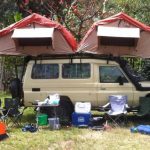Kilimanjaro climb marangu route is known as the “Coca-Cola” route. As the only route that has the luxury of sleeping huts along the way. The Marangu route is popular among those who want a bit more comfort while undertaking this classic trek. It has a gentle slope for the first several days, before the tough summit attempt from Kibo Hut. Regarded as the least difficult of routes, Marangu is good for very novice climber among the other 6 popular routes in Kilimanjaro
Day 1: Arrive Marangu
Clients flying into Kilimanjaro International Airport (JRO) early today we recommend a private transfer to Marangu where the rest of the day is at leisure. We stay at the Kilimanjaro Mountain Resort, which is beautifully located on the lower slopes of Kilimanjaro and is a perfect place to prepare for your Kilimanjaro climb.
Day2: To Mandara Hut (2,700 m); 3-5 hours climb.
After completing the entrance formalities at the National Park gate (1,830 m.) we climb up through attractive and unspoilt forest to reach the clearing containing (2,700 m.). The volcanic remains of Maundi Crater are nearby, and make a good afternoon excursion. An alternative is to simply rest and enjoy the beautiful forest around you.
Day 3: Horombo Hut (3,720 m); 4-6 hours walking.
The first part of the walk is a steep ascent through forest, but the path soon opens out into grassy moorland and, in clear weather, there are good views of Kibo and Mawenzi peaks. We climb steadily through the moorland zone, containing giant heather and occasional stands of groundsel, to eventually reach the hut complex at Horombo (3,720 m.). Sunrises and sunsets here are often very spectacular, the site is close to the glaciated dome of Kibo, and there is a real sense of being above the clouds.
Day 4: To Horombo Hut to further improve our acclimatization 4-5 hours.
The day is spent making an excursion towards the base of the seldom visited Mawenzi peak, which affords excellent views of Kibo and our route up to the crater rim at Gillman’s Point. Mawenzi is an older volcano than Kibo and so has eroded further into a very jagged ridge with dramatic pinnacles. The landscape feels more alpine and there is a greater sense of peacefulness than in other locations on this route. We spend a second night at Horombo Hut to further improve our acclimatisation. 4-5 hours walking.
Day 5: To Kibo Hut (4,700 m.); 4-6 hours climb.
We climb very gradually towards the lunar desert of the Saddle between Mawenzi and Kibo. The terrain changes to scree and there is a palpable sense of high altitude wilderness. We usually reach Kibo Hut (4,700 m.) at the bottom of the crater wall by midday and the afternoon is free (to contemplate the summit ascent!!). The remainder of the day is spent resting and eating in preparation for the final climb before a very early night.
Day 6: to To Gillman Point, Uhuru Peak, Horombo Hut 11-15 hours climb and retrace
We will start our ascent by torchlight at about 1 a.m. so that we can be up at Gillman’s Point by sunrise. The initial climb is steep over loose volcanic scree, but there are some well-graded zig-zags and a slow but steady pace will have us up to Gillman’s (5,685 m.) in about five or six hours. We will rest there and spend some time taking in the sunrise. Those who are still feeling strong can make the three hour round trip from here along the crater rim to Uhuru Peak (5,896 m.), passing close to the spectacular glaciers that still occupy most of the summit area. The descent is surprisingly fast and we return to Horombo Hut for the night. 11-15 hours walking.
Day 7: To Horombo hut to Marangu Gate 5-6 hours retrace.
We retrace our steps with a pleasant moorland walk to Mandara and then a lovely forest walk to the National Park gates. The greenness and lushness of the forest is quite a stunning contrast to the summit day, and it really makes you realize how varied the scenery on Kilimanjaro really is. [5-6 hours walking]

